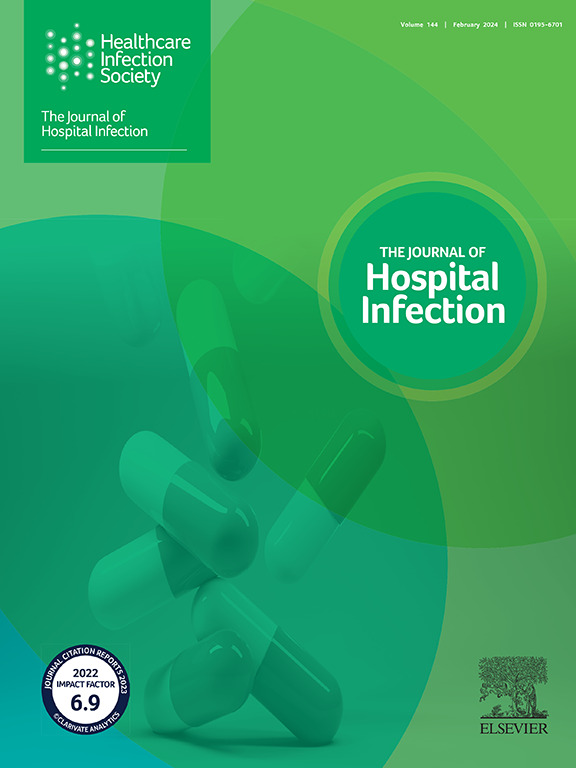Epidemiologic characteristics and risk factors of Clostridioides difficile infection in patients with active tuberculosis in the Republic of Korea: a nationwide population-based study
IF 3.9
3区 医学
Q1 INFECTIOUS DISEASES
引用次数: 0
Abstract
Background
The relationship between anti-tuberculosis (TB) agents and Clostridioides difficile infection (CDI) remains unclear. This study aimed to investigate the epidemiological characteristics and risk factors for CDI in patients with TB.
Methods
This nationwide, population-based cohort study was conducted in the Republic of Korea (ROK) between January 2018 and December 2022. Data were extracted from the National Health Insurance Service-National Health Information Database. The risk factors for CDI in patients with TB were identified through multi-variate logistic regression analysis using a 1:4 greedy matching method based on age and sex.
Results
During the study period, CDI developed in 2901 of the 131,950 patients with TB who were prescribed anti-TB agents. The incidence of CDI in patients with TB has increased annually in the ROK from 12.31/1000 in 2018 to 33.51/1000 in 2022. Oral metronidazole (81.94%) was the most common first-line treatment for CDI. The in-hospital mortality rate of patients with concomitant CDI and TB was 9.9%, compared with 6.9% in those with TB alone (P<0.0001). Multi-variate logistic regression analysis found intensive care unit admission, Charlson Comorbidity Index ≥3, antibiotic exposure, standard regimen, multi-drug-resistant TB and extrapulmonary TB to be significant risk factors for development of CDI in patients with TB.
Conclusion
CDI is uncommon in patients with TB, but it results in a significantly increased mortality rate. Patients being treated for TB should be monitored carefully for the development of CDI. Further clinical research is warranted to identify effective interventions for preventing and controlling CDI during TB treatment.
大韩民国活动性肺结核患者中艰难梭菌感染的流行病学特征和风险因素:一项基于全国人口的研究。
背景:抗结核(TB)药物与艰难梭菌感染(CDI)之间的关系仍不清楚。本研究旨在调查结核病患者 CDI 的流行病学特征和风险因素:这项基于人群的全国性队列研究于 2018 年 1 月至 2022 年 12 月在大韩民国(ROK)进行。数据来自国民健康保险服务(NHIS)国家健康信息数据库。通过基于年龄和性别的1:4贪婪匹配法进行多变量逻辑回归分析,确定了肺结核患者发生CDI的风险因素:在研究期间,131 950 名服用抗结核药物的肺结核患者中有 2 901 人发生了 CDI。韩国结核病患者的 CDI 发病率逐年上升,从 2018 年的 12.31/1000 增至 2022 年的 33.51/1000。口服甲硝唑(81.94%)是治疗 CDI 最常见的一线疗法。同时患有 CDI 和结核病的患者的院内死亡率为 9.9%,而仅患有结核病的患者的院内死亡率为 6.9%(PC结论:CDI 在肺结核患者中并不常见,但会导致死亡率显著增加。接受结核病治疗的患者应仔细监测是否发生 CDI。需要进一步开展临床研究,以确定在结核病治疗期间预防和控制 CDI 的有效干预措施。
本文章由计算机程序翻译,如有差异,请以英文原文为准。
求助全文
约1分钟内获得全文
求助全文
来源期刊

Journal of Hospital Infection
医学-传染病学
CiteScore
12.70
自引率
5.80%
发文量
271
审稿时长
19 days
期刊介绍:
The Journal of Hospital Infection is the editorially independent scientific publication of the Healthcare Infection Society. The aim of the Journal is to publish high quality research and information relating to infection prevention and control that is relevant to an international audience.
The Journal welcomes submissions that relate to all aspects of infection prevention and control in healthcare settings. This includes submissions that:
provide new insight into the epidemiology, surveillance, or prevention and control of healthcare-associated infections and antimicrobial resistance in healthcare settings;
provide new insight into cleaning, disinfection and decontamination;
provide new insight into the design of healthcare premises;
describe novel aspects of outbreaks of infection;
throw light on techniques for effective antimicrobial stewardship;
describe novel techniques (laboratory-based or point of care) for the detection of infection or antimicrobial resistance in the healthcare setting, particularly if these can be used to facilitate infection prevention and control;
improve understanding of the motivations of safe healthcare behaviour, or describe techniques for achieving behavioural and cultural change;
improve understanding of the use of IT systems in infection surveillance and prevention and control.
 求助内容:
求助内容: 应助结果提醒方式:
应助结果提醒方式:


